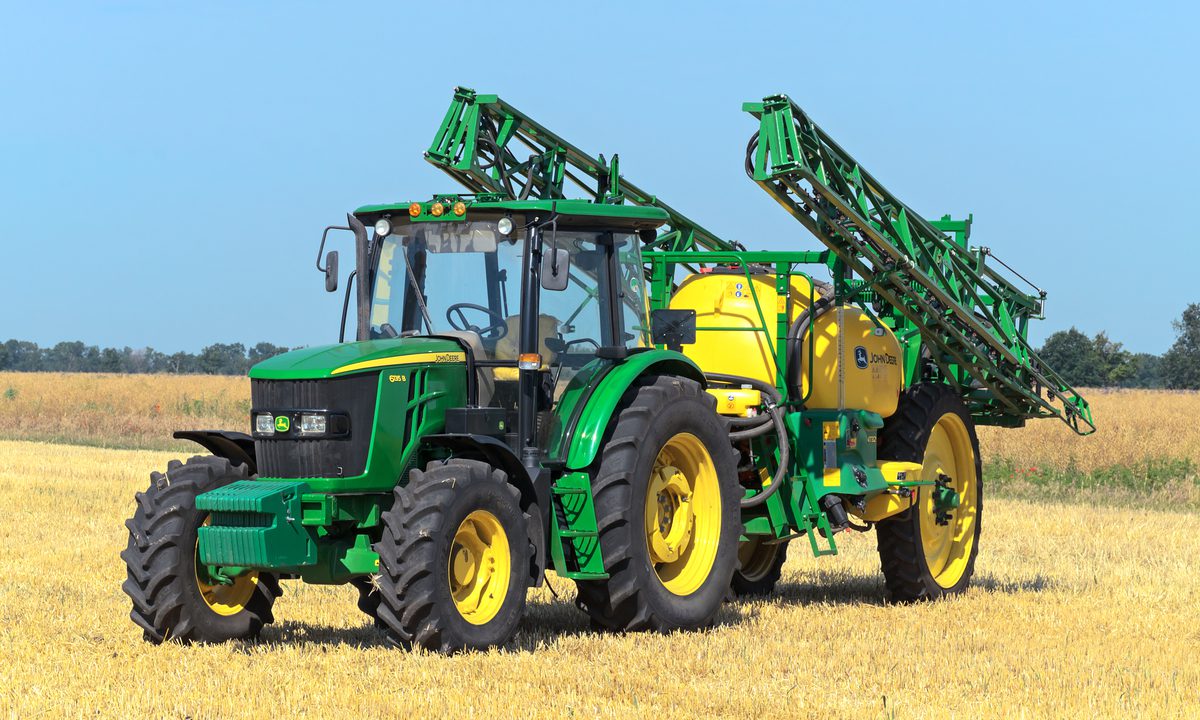Tractors Are Becoming Smart, Connected to Boost Productivity, Sustainability

In commercial agriculture, each time a tractor passes over a field, it consumes time, fuel and other resources such as seed, fertilizer or water. The fewer passes it makes, the greater the efficiency and sustainability of the operation.
As a result, commercial agriculture is working to boost efficiency by using more and more technology, including connectivity, automation, autonomy and electrification.
To help measure their gains, Deere and Co., the manufacturer of John Deere products, has rolled out a new metric that will measure growers’ progress in achieving better outcomes using less resources.
“We are uniquely positioned to deliver both economic and sustainable outcomes for our customers, employees and our broader stakeholders,” Deere & Co. Chairman and CEO John C. May said when announcing the program Feb. 18 during the company’s quarterly earnings call.
Measuring the Potential and Use of Tech Solutions
In this program dubbed Leap Ambitions, Deere and Co. will first size the incremental market opportunity. With its knowledge of the jobs its customers do, the company will quantify the value that can be created by using technology.
“This growth will provide a continued path for Deere to share in that value creation, rewarding employees, dealers and shareholders for the investments being made,” May said.
Then, the company will identify the key actions required. This will guide its investment in boosting its capabilities in digitalization, autonomy, automation and electrification.
“Additionally, we identified executional drivers applicable to all three segments, such as connected machines and business model transformation, which are each critical enablers of the ambitions,” May said.
In the third step of the Leap Ambitions program, Deere and Co. will define the financial and sustainable outcomes it hopes to achieve. This will help investors and stakeholders better understand the opportunities that can be unlocked in the future by making investments now.
“Executing our business plan will help us, and importantly, our customers in achieving both financial and sustainable outcomes without having to choose one over the other,” May said.
Rolling out Smart, Connected Solutions
One solution highlighted during the call is a tractor-mounted sprayer that uses computer vision and machine learning to differentiate weeds from crops and spray only the weeds with herbicides.
“Simply put, See & Spray vastly reduces the amount of herbicide required to grow a crop,” Deere and Co. Director of Investor Relations Joshua Jepsen said during the call. “The incremental addressable market would calculate the herbicide savings per acre multiplied by the addressable acres.”
Another solution is an autonomous tractor that is to be released later this year.
Productivity has long been a concern of growers who want to minimize the input of resources and maximize the output of produce. Increasingly, it’s also a concern of others, including consumers who want to buy only sustainable products and regulators who want to enforce best practices, Jill Kutzbach Sanchez, manager of sustainability and investor relations at Deere and Co., said during the call.
In addition, carbon trading markets have created new revenue opportunities for growers who boost their efficiency.
“As precision technologies continue to reduce the inputs used per unit of output, the environmental impact of generating that output improves, and this is increasingly of interest to our customer base for a variety of reasons,” Kutzbach Sanchez said.
